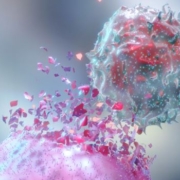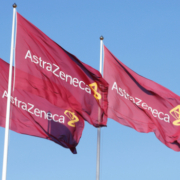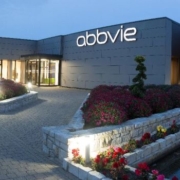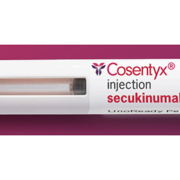3T Biosciences launches $40M at solid tumors with TCR tech
3T Biosciences launches $40M at solid tumors with TCR tech
Published: Aug 25, 2022
By Alex Keown
BioSpace
With $40 million in hand, Bay Area-based 3T Biosciences launched Thursday with a technology platform its leadership team believes can change the future of treatment for solid tumors and immune-mediated diseases.
Newly-tapped CEO Stefan J. Scherer is a veteran of Novartis’ oncology division and former chief medical officer of Cellectis. He told BioSpace he was drawn to 3T because of its approach to providing a safer and more efficacious treatment for these diseases. Scherer said the company’s 3T-TRACE platform (T-Cell Receptor Antigen and Cross-Reactivity Engine) and TCR-mimetic (TCRm) discovery platform have the combined potential to generate therapeutics aimed at pHLA targets that are “devoid of off-target cross-reactivity targeting.”
He added that the $40 million in Series A financing puts the company in a position to rapidly develop its investigational assets. It will also enable 3T to build toward clinical studies that can validate the company’s innovative approach toward targeting solid tumors, he said.
By leveraging the immune system’s capabilities to “recognize, target and destroy cancer cells,” 3T’s technology program is capable of advancing potentially safer and more effective next-generation therapies against difficult-to-treat cancers, the company noted in its announcement.
The Ultimate One-Two Punch
The 3T-TRACE platform is designed to identify the most prevalent and immunogenic targets in solid tumors through a combination of high-diversity target libraries and active machine learning. Scherer said it can identify novel shared TCR targets of productive immune responses against solid tumors and other diseases. He noted that the platform can screen TCRs and TCRms for specificity and off-target cross-reactivities.
“It is the ultimate one-two punch to enhance the discovery pipeline from novel target discovery to best-in-class pHLA targeting therapeutics,” Scherer said. “By using evolutionarily adapted immune responses against cancer, we can discover the best immunogenic targets that can be generalized for multiple tumor indications and across patient populations.”
In addition to those platforms, 3T licensed a precise antibody-based peptide-HLA therapeutic discovery platform and development-stage MAGE-A3T-cell receptor (TCR)-T assets. Scherer noted that in the past, there have been multiple toxicity concerns surrounding MAGE-A3 assets taken into the clinic. “We have an unprecedented combination of technology that can address these issues,” and allow for the development of a safe and efficacious therapeutic, he said.
The financing round was led by Westlake Village BioPartners with participation from Lightspeed Venture Partners. From an investment standpoint, Westlake saw “a nice confluence of biology and the appropriate amount of machine learning algorithms” able to handle the massive datasets necessary to achieve 3T’s drug design goals, Sean Harper, co-founding managing director at Westlake told BioSpace. Harper is also a new member of the 3T board of directors. He said the 3T technologies can discover new peptide targets capable of unlocking the intracellular changes that occur in cancer cells. From there, the company can develop therapeutics that de-risk concerns of cross-reactivities, Harper added.
The precise antibody-based peptide-HLA therapeutic discovery platform was licensed from the labs of Chris Garcia, a Stanford University scientist known for his research on the molecular and structural biology of cell surface receptors. Garcia, who sits on 3T’s scientific advisory board, said the three technologies at the company’s disposal “all kind of fit together” and have everything under one roof. That will give 3T a leg up when it seeks to drive one of its anti-cancer assets into the clinic, Garcia added.
The combination platforms should allow the company to prepare an Investigational New Drug Application with the U.S. Food and Drug Administration within 18 to 24 months, Scherer predicted. He noted that this is an aggressive timeline for a young company.
A TCR-Mimic Pipeline
The company has already developed one molecule into candidate position that could be at IND status next year, Scherer said. This is in addition to more than a dozen novel targets.
“We’re not just another TCR-mimic discovery company; there’s a whole pipeline here,” Garcia said.
Harper concurred. He said the three-legged platform of 3T’s technology propels the company to the role of industry leader in TCR targeting and therapeutics discovery for the treatment of solid tumors.
“It enables us to address one of the biggest challenges in cancer treatment, developing next-generation therapies for solid tumors and other immune-mediated diseases,” he added.
Even as the company emerges from stealth, Harper noted that it could be in line to forge a “high-quality deal” with one or two big pharma partners. This, he said, could not only benefit the company financially but also raise its profile significantly.
Source: BioSpace











